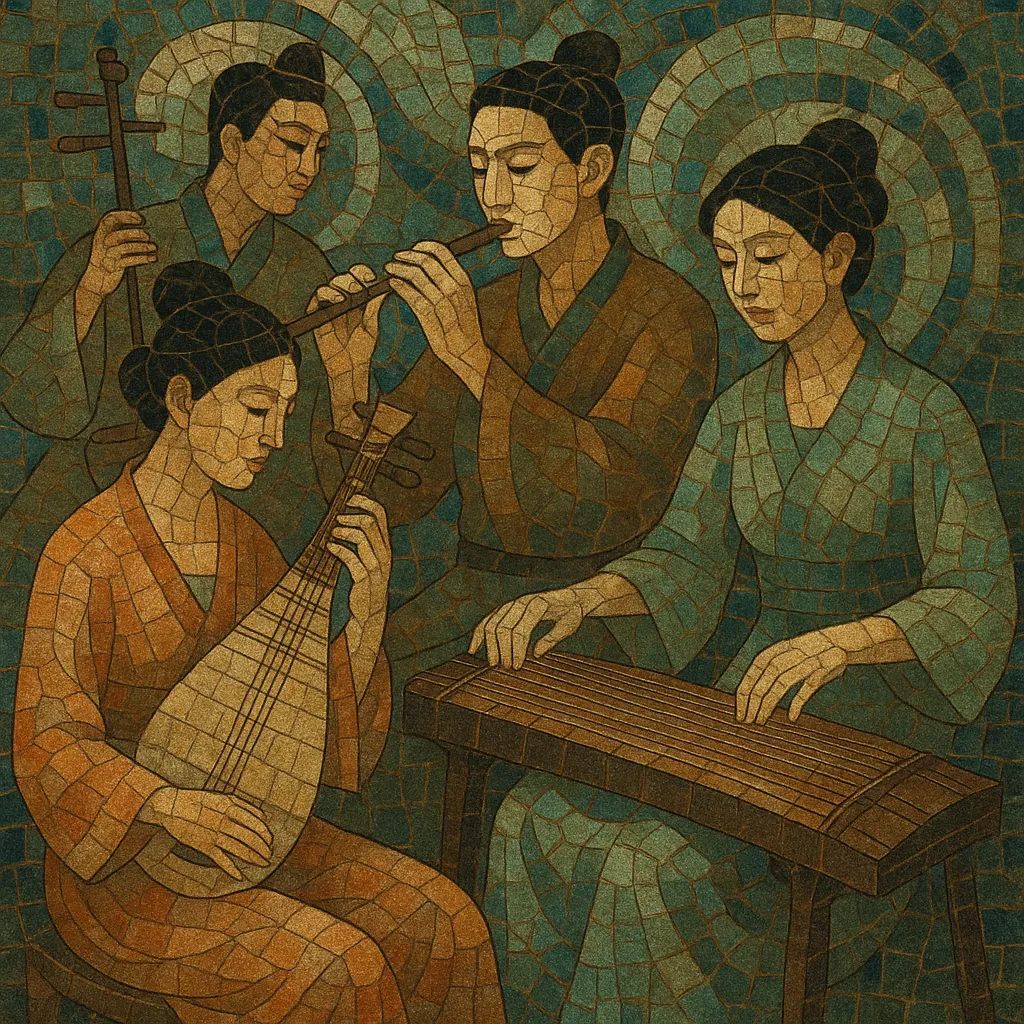Sizhu (literally “silk and bamboo”) is a refined Chinese chamber tradition for string (silk) and wind (bamboo) instruments.
It is typically performed in intimate settings such as teahouses and music clubs, featuring small ensembles that share a single core melody while each player ornaments it in their own way (heterophony).
The repertoire is organized around cyclical, beat-patterned frameworks (ban) and named melodic models (qupai), and favors pentatonic modes with elegant, flowing ornamentation.
Regional streams exist (most famously Jiangnan sizhu around Shanghai and Suzhou, and related southern styles), but all emphasize light timbre, supple rhythm, and social music-making.
Sizhu practice crystallized during the Qing era, drawing on older courtly and folk chamber practices in which silk-string lutes/fiddles and bamboo flutes played indoors for cultivated listening. By the 19th century, amateur clubs in Jiangnan (Shanghai–Suzhou region) gathered regularly in teahouses to play established qupai like Lao Liu Ban, codifying a shared ensemble language and etiquette.
In late Qing and early Republican Shanghai, sizhu became a hallmark of urban literati and artisan culture. Musicians sat around a table, negotiated tempo and ornamentation by ear, and cultivated a delicate ensemble balance. Printed collections, early recordings, and music societies helped stabilize repertory and regional variants while keeping the performance practice flexible and social.
Through the 20th century, conservatories and municipal troupes documented and taught sizhu styles, while composers/arrangers adapted its melody-and-variation approach for larger “national orchestra” (guoyue) settings. Although concert stages sometimes present more fixed arrangements, community ensembles continue the traditional heterophonic, participatory ethos. Today, sizhu remains a touchstone for Chinese chamber aesthetics and a living social music tradition.


